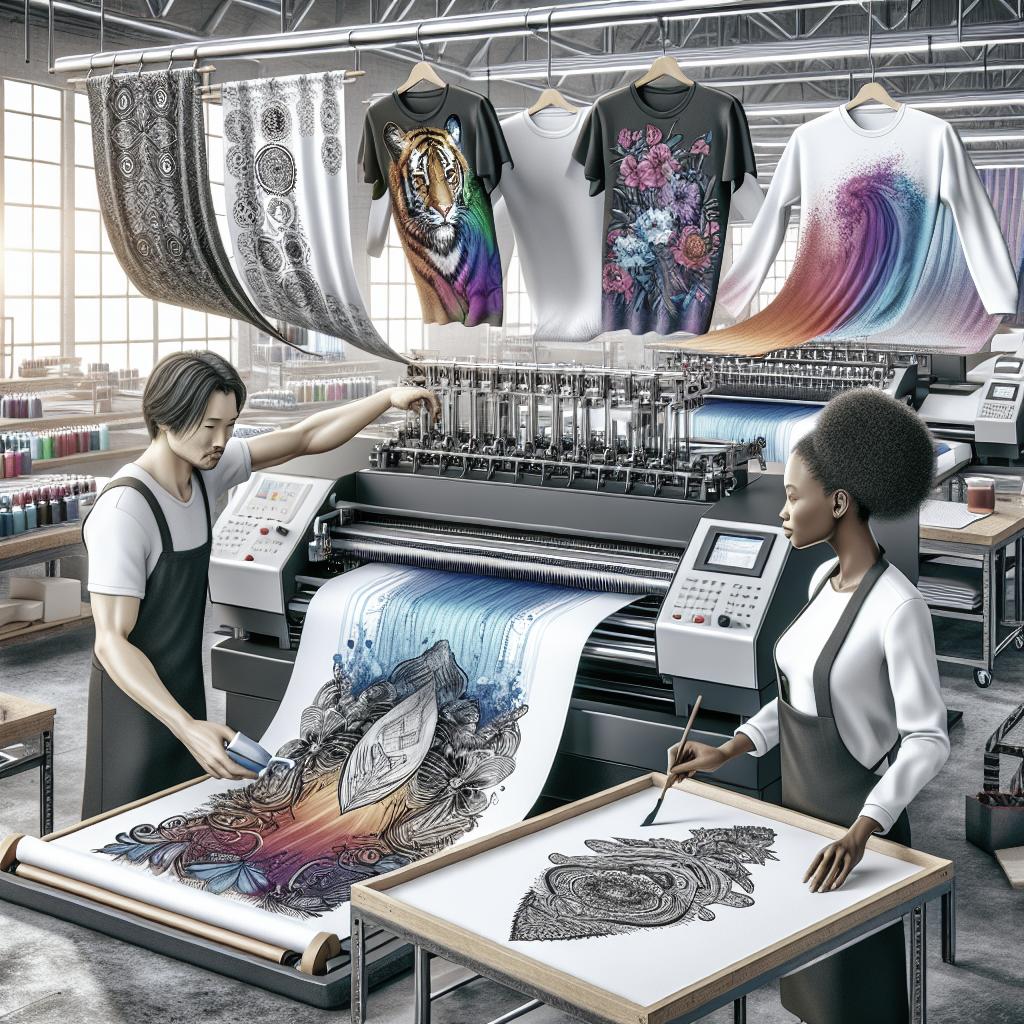“`html
The Latest Techniques in Fabric Printing
Fabric printing has made significant strides in recent years, blending art with technology to offer vibrant, high-quality designs. Demand for bespoke designs and sustainable practices has driven innovation in this sector. In this post, we’ll explore the latest fabric printing methods, from traditional techniques like screen printing to cutting-edge methods such as dye sublimation and reactive printing. These methods each have unique characteristics and applications, offering diverse options for fashion designers, interior decorators, and hobbyists alike.
Fabric Printing Methods
1. Stamp Printing
Stamp printing is one of the most ancient forms of fabric decoration. It involves using carved wooden blocks to apply color to fabric. Despite its antiquity, this technique is cherished for its hand-crafted charm and the uniqueness it brings to each piece. The tactile nature of stamp printing can create textures and a vintage aesthetic that modern techniques often struggle to replicate.
With the resurgence of artisanal crafts, stamp printing has returned to the spotlight. It’s highly appealing to eco-conscious consumers and artisans who appreciate the method’s sustainable aspects, utilizing natural dyes and minimal equipment. Moreover, advancements in materials and carving technologies have enhanced the precision and intricacy of stamp designs, making it a viable option even in contemporary fashion circles.
2. Transfer Printing
Transfer printing is a versatile method that involves transferring a design from a pre-printed paper onto the fabric using heat and pressure. This technique offers vibrant colors and intricate details, making it ideal for producing complex patterns. It’s particularly popular in the production of customized apparel due to its ability to produce small quantities economically.
In recent developments, transfer printing has seen improvements in ink formulations, allowing for better wash durability and colorfastness. The rise of digital transfer techniques has also reduced production times, enabling faster turnaround for bespoke designs. This capability to quickly adapt and reproduce designs is particularly beneficial for businesses that cater to trends and fast fashion markets.
3. Screen Printing
Screen printing, known for its durability and vibrant colors, involves pushing ink through a mesh screen onto fabric. Each color in the design requires a separate screen, which makes it labor-intensive for intricate, multicolored designs. However, its longevity and vivid output make it a preferred choice for bulk production, like t-shirts and banners.
The technique has evolved with technological integrations, such as automated screen printers that increase production speed and accuracy. Moreover, the introduction of eco-friendly ink options has expanded its appeal, allowing for more sustainable production processes. This approach provides excellent quality control, maintaining consistency across large batches.
4. Dye Sublimation
Dye sublimation is a cutting-edge fabric printing technique perfect for printing high-resolution, photo-quality images. This process involves transforming solid dye particles into a gas using heat and pressure, which then bonds with the fabric at the molecular level. It is predominantly used for synthetic fabrics, especially polyester, due to the need for high temperature during application.
The latest advancements in dye sublimation include better color richness and depth, enhanced by improvements in sublimation dyes and equipment. This method is ideal for creating vibrant, full-color designs with gradients and intricate details, often seen in activewear and promotional products. The resultant prints are durable and resistant to peeling and fading, even after multiple washes.
5. Pigment Printing
Pigment printing is a dry process that uses pigments rather than dyes to color the fabric. One of its significant advantages is compatibility with a wide range of materials, including natural and synthetic fibers. This method provides excellent lightfastness and color vibrancy and is relatively straightforward as it doesn’t require steaming or washing after application.
Recent innovations in pigment printing involve advancements in inkjet technology, enabling detailed digital printing capabilities. This has opened the door for personalized (and short-run) printing jobs, adding a layer of economic efficiency. The application of digital technologies also ensures lesser waste of resources, aligning with industries focusing on sustainable practices.
6. Reactive Printing
Reactive printing is widely used for its brilliant color results on natural fibers like cotton, silk, and wool. The process involves the use of reactive dyes that form a chemical bond with the fabric during steaming. The result is a print that is highly colorfast, resilient, and vibrant, making it ideal for luxury fabrics and haute couture designs.
The latest techniques in reactive printing include digital reactive printing, which combines the vibrant hues of traditional methods with the precision of digital printing. This evolution allows for exquisite detail and complex imagery, which could be pivotal in high fashion and custom home textiles markets. Additionally, industry advancements are focusing on reducing water consumption, crucial for maintaining sustainability in fabric production.
Summary of Main Points
| Method | Characteristics | Applications |
|---|---|---|
| Stamp Printing | Artisanal, Textured | Unique designs, Vintage appeal |
| Transfer Printing | Detailed, Vibrant | Customized apparel, Small Orders |
| Screen Printing | Durable, Vivid | Large batches, Bulk items |
| Dye Sublimation | High resolution, Durable | Activewear, Promotional products |
| Pigment Printing | Lightfast, Versatile | Wide materials, Economical |
| Reactive Printing | Colorfast, Vibrant | Luxury fabrics, High fashion |
“`


